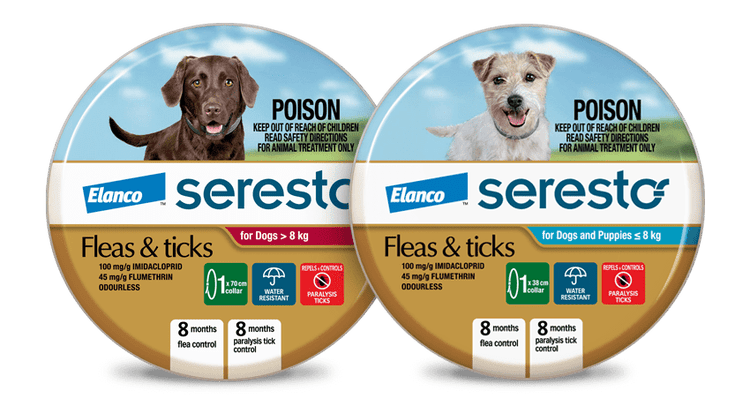Reviewed by Dr Liisa Ahlstrom
Learn how to protect your dog against ehrlichiosis, a deadly disease spread by brown dog ticks.
Protect your dog from Canine Ehrlichiosis
Canine monocytic ehrlichiosis, or ‘ehrlichiosis’ for short, is a tick-borne disease that first appeared in Australia, in a dog in the Kimberley region of Western Australia (WA) in May 2020. Since then, it has rapidly spread to dogs across many parts of northern WA, the Northern Territory, northern South Australia and Queensland. It has also been detected in New South Wales and in dogs in Victoria that have travelled and is predicted to spread to dogs in other parts of the country.
Ehrlichiosis is caused by the bacterium, Ehrlichia canis, that is transmitted between dogs by the bite of an infected brown dog tick. Experts have warned that this ‘epidemic’ is the most serious threat to canine health in Australia since the parvovirus outbreaks more than 30 years ago. In the short time since it emerged in Australia, this disease has caused suffering or death in thousands of dogs. Signs of ehrlichiosis vary and can include fever, weakness, lethargy, loss of appetite, rapid weight loss, bruising and bleeding. However, not all infected dogs show signs of the disease. There is no vaccine available, and unfortunately, antibiotic treatment is not always successful.
Studies have shown that Ehrlichia canis can be transmitted within 3 hours of tick attachment1, which is faster than most tick products can kill ticks. The implication for protecting dogs is that a tick product that repels ticks, to prevent ticks from biting, is critical. The Seresto™ Collar for Dogs is the only product approved by the Australian veterinary medicines regulator, the APVMA, to reduce the transmission of Ehrlichia canis between dogs by brown dogs ticks2, because unlike most tick products, Seresto repels and kills ticks on contact, so they don't need to bite. Although most other tick products kill ticks too slowly to prevent transmission of E. canis, many are highly effective at killing ticks on dogs, and so, also have an important role to play in curbing the wider spread of this serious canine disease.
More information can be found here:
AMRRIC - Animal Management in Rural and Remote Indigenous Communities (Ehrlichiosis resources)
Australian government, Department of Agriculture, Fisheries and Forestry - Ehrlichiosis in dogs - DAFF (agriculture.gov.au)
Elanco would like to acknowledge the important work of all veterinarians and animal health workers dealing with ehrlichiosis across the country. Animal Management in Remote and Rural Indigenous Communities (AMRRIC) has been at the front line of combating this new disease. AMRRIC supports animal care and management in Aboriginal and Torres Strait Islander communities, with an approach founded on a deep respect for the cultures and traditional ways of Aboriginal and Torres Strait Islander peoples, recognition of companion animals as being intrinsic to the fabric of the community, and acknowledgement of the inseparable link between the health and wellbeing of companion animals and that of their owners and their communities. To learn more, or to donate to AMRRIC, visit https://www.amrric.org/.
References
- Fourie et al. Vet Parasitol. 2013; 197:595– 603. Transmission of Ehrlichia canis by Rhipicephalus sanguineus ticks feeding on dogs and on artificial membranes - PubMed (nih.gov)
- Stanneck & Fourie. Parasitol Res. 2013; 112:S21–S32. Imidacloprid 10 % / flumethrin 4.5 % collars (Seresto®, Bayer) successfully prevent long-term transmission of Ehrlichia canis by infected Rhipicephalus sanguineus ticks to dogs - PubMed (nih.gov)

Seresto flea & tick collar for dogs
Seresto provides dogs with long-lasting flea protection for 8 months and tick protection for 4 months









